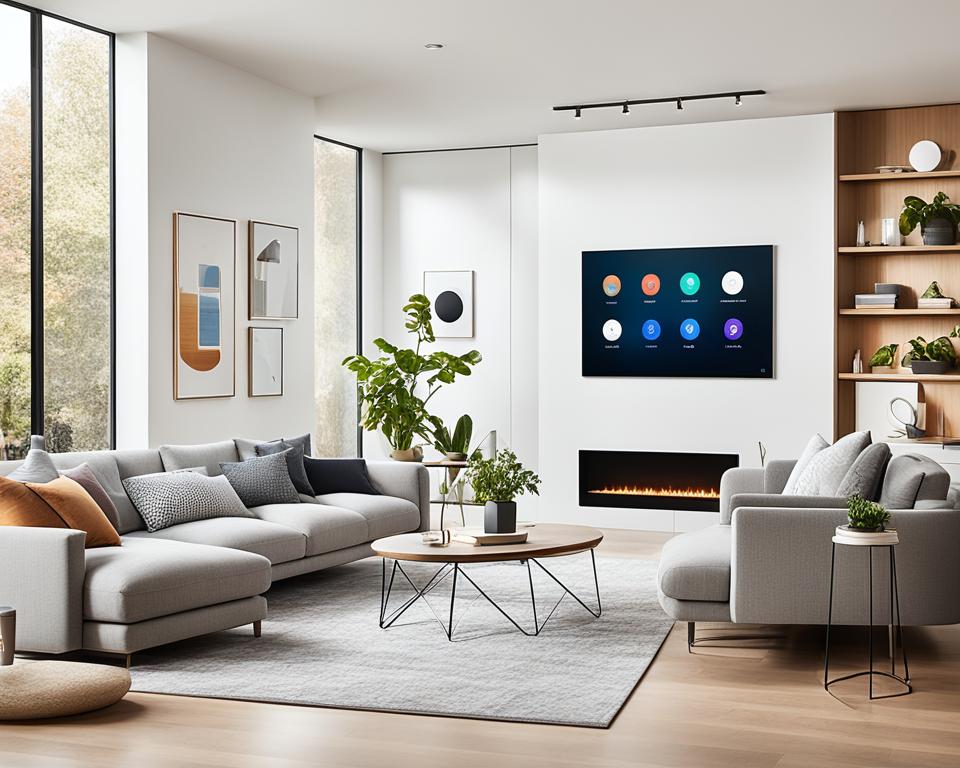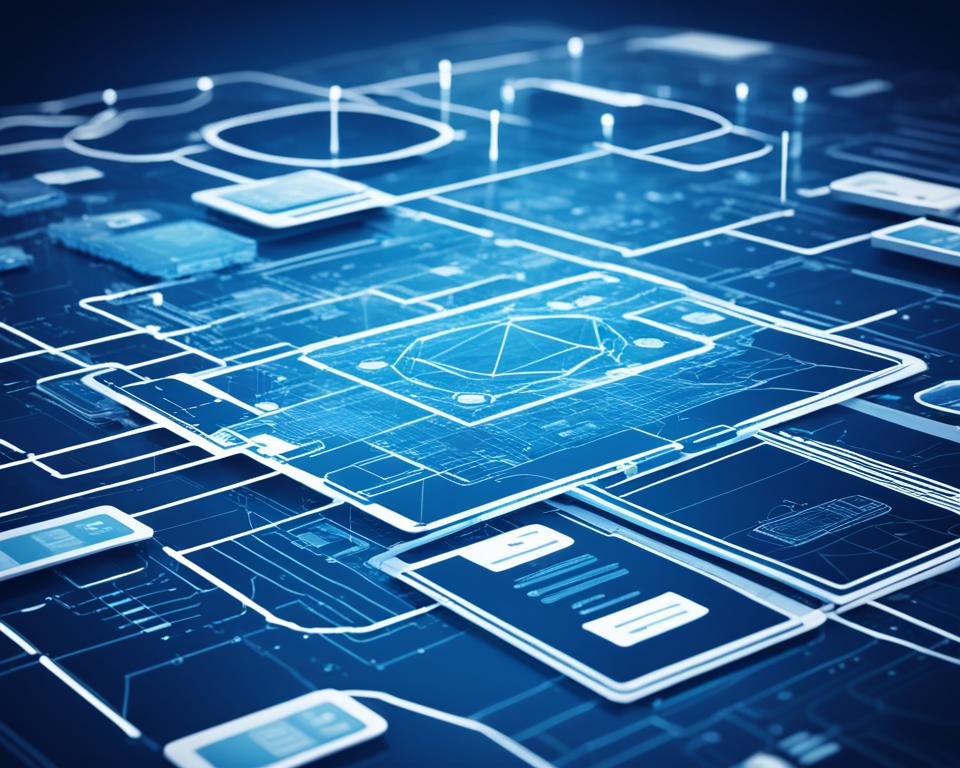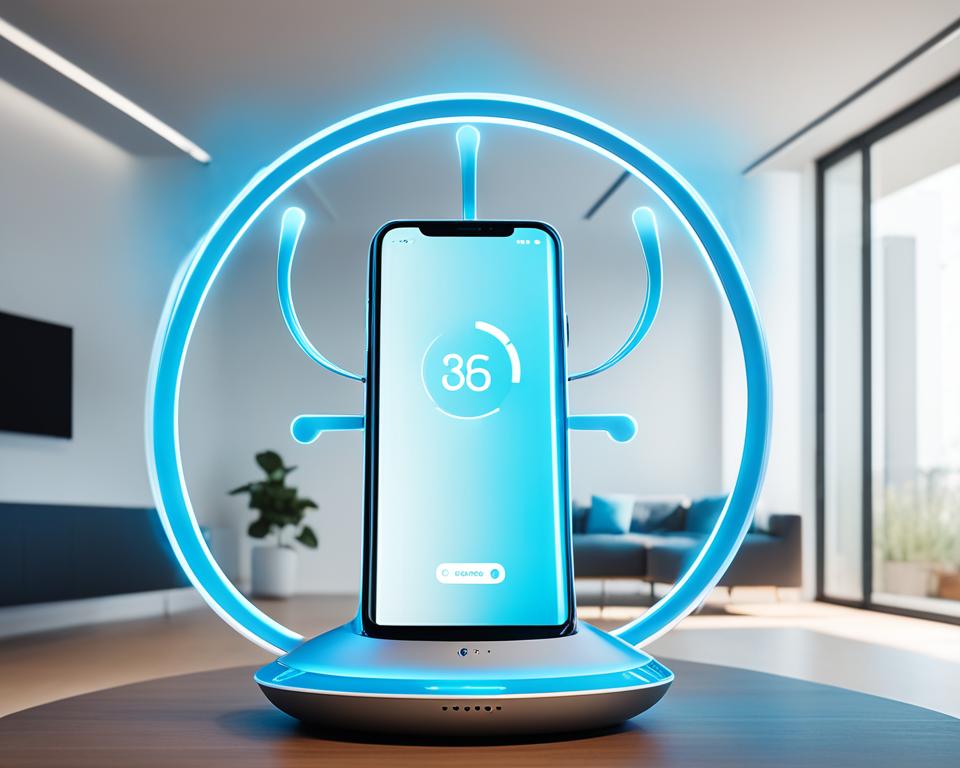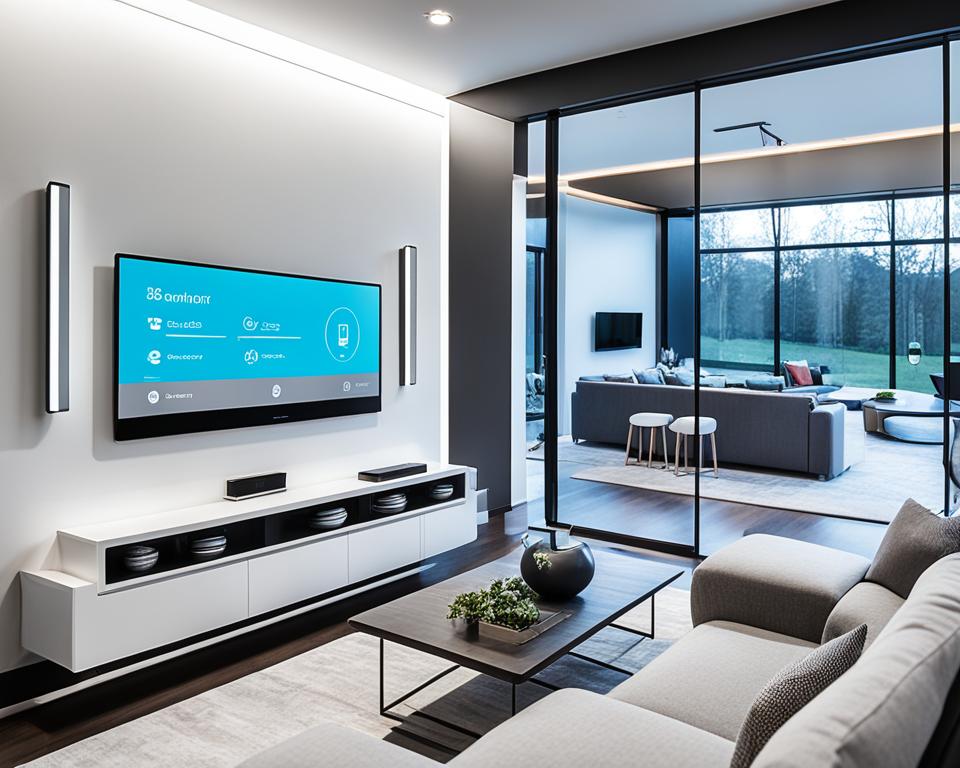Technology & Financial
The Seamless Integration of IoT: Crafting the Ultimate Smart Home Experience
Welcome to my blog! Today, we’re going to explore the exciting world of smart homes and the seamless integration of IoT (Internet of Things) technology. In recent years, smart homes have transformed the way we live, offering unmatched convenience, comfort, and efficiency. With IoT integration, the possibilities for automating and connecting devices within our homes are endless. So, let’s dive in and discover how IoT is revolutionizing the smart home experience!
Imagine waking up in the morning and having your coffee brewing, your lights gradually brightening, and your favorite music playlist starting to play—all without lifting a finger. That’s the magic of a fully connected smart home. With IoT, you can seamlessly integrate various devices and systems, creating a harmonious ecosystem where each component is in sync, enhancing your lifestyle in ways you never thought possible.
But what exactly is IoT? Simply put, it’s a network of physical devices, vehicles, appliances, and other objects embedded with sensors, software, and connectivity, allowing them to connect and exchange data. In the context of smart homes, IoT enables us to connect and control our devices remotely, creating a truly interconnected and intelligent living environment.
Key Takeaways:
- IoT integration is revolutionizing the smart home experience, offering unmatched convenience, comfort, and efficiency.
- With IoT, you can seamlessly connect and control various devices and systems within your home from anywhere.
- Smart homes equipped with IoT technology provide a harmonious ecosystem where each component works together to enhance your lifestyle.
- IoT enables the automation and remote control of devices, transforming everyday tasks into effortless experiences.
- Through IoT integration, smart homes offer enhanced convenience, improved energy efficiency, and advanced security.
Understanding IoT and Its Role in Smart Homes
In this section, we will provide an overview of IoT and its significance in the context of smart homes. We will define IoT and explain how it enables the connection and communication of various devices and systems. Additionally, we will discuss the different types of IoT devices used in home automation and highlight the benefits of having a fully connected smart home, including convenience, efficiency, and improved quality of life.
What is the Internet of Things (IoT)?
The Internet of Things (IoT) refers to the network of interconnected devices that are capable of exchanging data and communicating with each other. In the context of smart homes, IoT allows for the seamless integration and automation of various household devices, such as lighting, heating, security systems, and entertainment systems. By enabling these devices to work together harmoniously, IoT technology transforms a regular house into a smart home.
Differing Types of IoT Devices for Home Automation
There are various types of IoT devices that play a crucial role in home automation. These devices include:
- Smart thermostats: These devices allow homeowners to remotely control and manage their home’s temperature, saving energy and maximizing comfort.
- Smart lighting: By integrating smart lighting systems, homeowners can control and automate their lighting settings, creating personalized scenes and enhancing energy efficiency.
- Smart security systems: IoT-enabled security systems provide enhanced protection by allowing homeowners to monitor and control their home’s security cameras, door locks, and alarm systems remotely.
- Smart speakers: With voice-controlled smart speakers, homeowners can easily interact with their smart home devices through voice commands, making daily tasks more convenient.
Benefits of a Fully Connected Smart Home
A fully connected smart home brings numerous benefits to homeowners, enhancing their daily lives in multiple ways:
- Convenience: With IoT devices, homeowners can automate routine tasks, such as turning on/off lights, adjusting thermostats, and even starting appliances, all with a touch of a button or a simple voice command.
- Efficiency: IoT devices enable energy-efficient home management, allowing homeowners to optimize energy consumption and reduce wastage.
- Improved quality of life: A smart home offers comfort and ease of living by providing homeowners with personalized control and automation options that cater to their unique preferences.
- Enhanced security: IoT-enabled security systems provide homeowners with remote monitoring, real-time alerts, and robust protection, ensuring their safety and peace of mind.
With the integration of IoT technology, smart homes are transforming the way we live by offering unparalleled convenience, efficiency, and security. In the coming sections, we will explore the different aspects of building and optimizing a smart home, showcasing the possibilities and benefits of this evolving technology.
Starting with Smart Devices: Building Blocks of a Connected Home
When it comes to creating a connected home, smart devices serve as the essential building blocks. These devices form the foundation of a seamless and integrated smart home experience, enabling automation and connectivity.
Smart devices, also known as IoT devices (Internet of Things), are equipped with advanced technology and connectivity features that allow them to communicate and interact with each other. This interconnectedness is what makes a connected home possible.
Examples of commonly used smart devices in a connected home include smart lights, smart thermostats, and smart speakers. These devices are designed to enhance various aspects of daily living, providing convenience, comfort, and efficiency.

Smart lights are not just ordinary light bulbs—they can be controlled remotely using a smartphone or voice commands. With smart lights, you can adjust the brightness, color, and schedule of your home lighting according to your preferences, creating the perfect ambiance for any occasion.
Smart thermostats, on the other hand, enable you to regulate the temperature of your home with precision. These devices learn your heating and cooling preferences over time and can automatically adjust settings to optimize energy efficiency, saving you money on utility bills.
Another popular smart device in connected homes is the smart speaker. These devices, such as Amazon Echo or Google Home, act as virtual assistants that can respond to voice commands, play music, provide weather updates, and even control other smart devices in your home.
By integrating these smart devices into your home, you can create a seamless network of interconnected devices that work together to enhance your daily life. From controlling your lights and adjusting your thermostat to listening to your favorite music and getting important information, smart devices bring convenience and automation to every corner of your home.
Internet of Things (IoT) and Smart Devices
In today’s rapidly evolving world, Internet of Things (IoT) technology has transformed the way we live. IoT has spurred the development of smart devices that seamlessly integrate into our daily lives, enhancing convenience, efficiency, and connectivity. By connecting these smart devices to IoT networks, we can automate tasks, control our homes remotely, and enjoy unprecedented levels of comfort and security. In this section, we will explore how IoT technology is revolutionizing daily life and the trending IoT solutions that have captivated smart home enthusiasts.
Revolutionizing Daily Life with IoT Technology
The IoT has had a profound impact on the way we go about our daily routines. Smart devices, equipped with sensors and connectivity features, enable automation and control in various aspects of our lives. For instance, smart thermostats can autonomously adjust the temperature in our homes based on our preferences and patterns, resulting in energy savings and increased comfort. Home security systems integrated with IoT technology provide enhanced protection, allowing us to monitor our homes from anywhere in the world. We can even receive alerts and notifications on our smartphones in real-time. From smart lights that can be controlled with a simple voice command to intelligent appliances that learn our preferences, IoT has transformed mundane tasks into effortless and intuitive experiences.
Moreover, IoT technology has made our homes more energy-efficient. By leveraging data collected by smart devices, we can optimize energy usage, reduce waste, and lower our carbon footprint. For example, smart energy management systems can monitor our energy consumption and suggest ways to reduce it. With real-time insights and automated controls, we can analyze our usage patterns and make informed decisions to promote sustainability. As a result, IoT has enabled us to live more responsibly while enjoying the benefits of a connected and efficient home.
The Trending IoT Solutions for Smart Home Enthusiasts
Smart home enthusiasts are always on the lookout for the latest and most innovative IoT solutions. These solutions cater to a wide range of needs and preferences, making our homes smarter and more personalized. One of the most significant trends in the IoT space is the rise of voice assistants, such as Amazon Alexa and Google Assistant. These intelligent devices can control various smart devices through voice commands, allowing us to effortlessly manage our homes without lifting a finger. From adjusting the thermostat to playing our favorite music, voice assistants have become an integral part of the modern smart home.
Another popular IoT solution for smart home enthusiasts is smart security systems. These systems integrate with our existing security infrastructure to provide comprehensive protection. With features like facial recognition, motion detection, and remote monitoring, smart security systems offer peace of mind and convenience. We can easily access live video feeds, receive notifications about potential security breaches, and even unlock doors for authorized visitors from anywhere using a smartphone. As technology continues to advance, these smart security systems become even more sophisticated and effective in safeguarding our homes.
Energy management devices are also gaining traction among smart home enthusiasts who are keen to optimize their energy usage. These devices help us monitor and regulate energy consumption, ensuring that we make environmentally conscious choices. For example, smart plugs can track the energy usage of individual devices and provide insights into their efficiency. By identifying energy-hungry appliances, we can adjust our habits and conserve energy effectively. In addition, smart meters allow us to analyze our energy usage in detail, providing a holistic view of our consumption patterns and empowering us to make informed decisions about energy-saving measures.
As smart home enthusiasts continue to explore the possibilities of IoT, the market for IoT solutions is expanding rapidly. From home entertainment systems to smart appliances, IoT integration has become a key consideration for anyone looking to make their home smarter and more connected. With a plethora of options available on the market, smart home enthusiasts can choose from a vast ecosystem of devices and technologies to create their dream connected home.
In the next section, we will discuss how IoT devices in a smart home work together to maximize comfort and efficiency. We will explore the concept of creating a cohesive system of IoT-enhanced appliances and delve into the seamless interdevice communication that allows for automated routines and synchronized performance. Join me as we dive deeper into the heart of the smart home experience!
Maximizing Comfort and Efficiency: How IoT Devices Work Together
In a smart home, the true power of IoT devices shines through their ability to collaborate seamlessly, ensuring maximum comfort and efficiency for homeowners. The integration of these smart devices creates a cohesive system that optimizes daily living experiences.
Creating a Cohesive System of IoT-Enhanced Appliances
To achieve a harmonious smart home ecosystem, it is crucial to carefully select and integrate IoT-enabled appliances. These devices, such as smart thermostats, lighting systems, and home assistants, work together to create an interconnected network of automated functionalities. By setting up a cohesive system, users can enjoy the convenience of controlling multiple aspects of their homes with ease.
For example, imagine waking up in the morning, stepping out of bed, and having the lights gradually brighten, the thermostat adjusting to your preferred temperature, and your favorite music playing softly in the background. With a well-designed system, these tasks can be automated, saving you time and effort every day.

Automated Routines and Seamless Interdevice Communication
One of the remarkable features of IoT devices is their ability to communicate and coordinate with one another. By establishing automated routines, smart devices can work together to perform tasks in a synchronized manner, creating a seamless and efficient living environment.
For instance, when you leave your home, the smart system can automatically turn off lights, adjust the thermostat to an energy-saving mode, and activate the security system. Conversely, when you return, the system can detect your presence, welcoming you with a comfortable temperature and customized lighting settings.
This interdevice communication results in enhanced comfort and energy efficiency. By leveraging IoT technology, homeowners can experience a convenient and optimized lifestyle, while simultaneously reducing energy consumption and minimizing environmental impact.
| Benefits of a Cohesive IoT System | |
|---|---|
| Enhanced Comfort | IoT devices work together to create personalized and convenient living environments, making daily tasks effortless. |
| Efficient Energy Consumption | Seamless interdevice communication enables automated routines that optimize energy usage, reducing waste and lowering utility bills. |
| Streamlined Home Management | A cohesive IoT system simplifies control and monitoring, allowing users to easily manage multiple devices from a single interface or via voice commands. |
| Improved Quality of Life | The integration of smart devices in a cohesive system enhances convenience and frees up time for more important activities, enriching daily life. |
Ensuring Smart Home Security with IoT Innovations
In today’s rapidly advancing digital landscape, smart home security has become a critical concern for homeowners. As our homes become more interconnected with IoT devices, protecting our privacy and ensuring the safety of our loved ones has never been more important. Fortunately, the innovative advancements in IoT technologies have paved the way for cutting-edge security solutions.
One of the key IoT innovations that enhance smart home security is the integration of smart locks. These intelligent locks provide homeowners with enhanced control over access to their homes. With features like keyless entry and remote access, smart locks offer convenience and an added layer of security, ensuring that only authorized individuals can enter the premises.
“Smart locks provide homeowners with enhanced control over access to their homes.”
Another crucial aspect of smart home security is the inclusion of security cameras. These IoT-powered cameras provide real-time monitoring, allowing homeowners to keep a watchful eye on their property no matter where they are. With features like motion detection and video recording, smart security cameras act as a powerful deterrent against intruders and provide valuable evidence in the event of a security breach.
Intrusion detection systems are yet another IoT innovation that ensures smart home security. These systems use advanced sensors and algorithms to detect any unauthorized entry attempts or suspicious activities within the home. By integrating with other smart devices like door sensors and motion detectors, intrusion detection systems provide comprehensive coverage and instant alerts in case of a security threat.
The integration of IoT technologies in smart home security not only offers enhanced protection but also enables homeowners to have peace of mind. By utilizing smart locks, security cameras, and intrusion detection systems, individuals can create a robust security ecosystem that actively safeguards their homes. With the power of IoT innovations, smart home security has never been more accessible, empowering homeowners to maintain a safe and secure living environment.
| IoT Innovations for Smart Home Security | Benefits |
|---|---|
| Smart locks |
|
| Security cameras |
|
| Intrusion detection systems |
|
Scalability in IoT: Designing for the Future
When designing smart home systems, scalability is a crucial factor to consider. The ability to adapt and evolve with changing needs and technologies ensures that your smart home remains relevant and efficient in the long run. Investing in adaptable IoT frameworks and extensible technologies is the key to achieving scalability and future-proofing your smart home.
Adaptable IoT Frameworks for Evolving Smart Home Needs
In order to design a scalable smart home, it is essential to choose IoT frameworks that are adaptable to evolving needs. These frameworks provide a flexible and modular foundation that can accommodate future expansions and advancements. By using adaptable IoT frameworks, you can easily integrate new devices, services, and functionalities into your smart home without disrupting the existing infrastructure.
Adaptable IoT frameworks offer a high degree of interoperability, allowing different devices and technologies to seamlessly communicate and work together. This interoperability ensures that your smart home remains cohesive and interconnected, providing a smooth and efficient user experience. With an adaptable framework, you can easily incorporate new IoT devices and technologies as they emerge, keeping your smart home at the forefront of innovation.
Investing in Extensible IoT Technologies
To achieve scalability in your smart home, it is crucial to invest in extensible IoT technologies. These technologies have the ability to grow and expand along with your changing needs and preferences. By choosing extensible IoT technologies, you can easily upgrade and enhance your smart home system without the need for extensive modifications or replacements.
Extensible IoT technologies allow you to add new features and functionalities to your smart home without disrupting the existing setup. For example, you can enhance your home security by integrating new surveillance cameras or strengthen your energy management by adding smart appliances. These extensible technologies ensure that your smart home can adapt to your evolving lifestyle and priorities.
Furthermore, investing in extensible IoT technologies guarantees that your smart home remains compatible with future innovations and advancements in the IoT industry. As new devices and standards emerge, you can seamlessly connect them to your existing smart home system, ensuring that your home stays up-to-date with the latest technological advancements.
By prioritizing scalability and investing in adaptable IoT frameworks and extensible technologies, you can future-proof your smart home and ensure that it remains relevant and efficient in the ever-evolving IoT landscape.

The User Experience in Smart Homes
Designing Intuitive Interfaces for Home Management
In order to provide a seamless smart home experience, it is crucial to design intuitive interfaces for home management. A user-friendly interface enables homeowners to easily control and interact with their IoT devices, enhancing the overall user experience. By prioritizing intuitive design, smart home systems can be accessible and enjoyable for users of all technical levels.
When designing the interface, factors such as simplicity, clarity, and responsiveness should be considered. The interface should be visually appealing, with clear and easily understandable icons and controls. By incorporating familiar symbols and intuitive navigation, users can quickly grasp how to interact with their smart home devices.
Visual feedback is also important in an intuitive interface. For example, when a user adjusts the thermostat remotely, a responsive interface should update in real-time to reflect the new temperature setting. This immediate feedback provides confidence and assurance that the desired action has been successfully executed.
Moreover, the interface should be adaptive, able to cater to the individual preferences and needs of different users. Customizability allows homeowners to personalize their smart home experience to suit their lifestyle and preferences. Whether it’s adjusting the lighting color, setting up personalized routines, or fine-tuning automation settings, an intuitive interface empowers users to have complete control over their smart home.
Customizing Individual User Interactions through IoT
One of the key advantages of IoT in smart homes is the ability to customize individual user interactions. Through IoT technology, homeowners can tailor their smart home experience to their unique preferences and needs, creating a personalized and tailored environment.
For example, smart home systems can use data gathered from user interactions and behaviors to learn individual preferences and adjust settings automatically. This means that over time, the smart home becomes a true reflection of the homeowner’s lifestyle and habits.
Furthermore, IoT enables seamless integration between different devices, allowing users to interact with their smart home through multiple channels. Whether it’s voice commands, smartphone apps, or even wearable devices, the IoT ecosystem provides flexibility and convenience in how users interact with their smart home.
By customizing individual user interactions, smart homes not only enhance convenience but also improve overall satisfaction. Homeowners can enjoy a personalized level of control and automation that caters to their specific needs, resulting in a truly unique and tailored smart home experience.
The Heart of the Smart Home: Centralized IoT Connectivity
In order to unlock the full potential of a smart home, a centralized IoT connectivity solution is essential. This centralized hub serves as the heart of the smart home, enabling seamless integration and management of all connected devices and systems.
Streaming Data and Managing Devices from a Single Hub
A smart home hub acts as a centralized control point, allowing homeowners to stream and manage data from multiple devices through a single interface. This eliminates the need for separate apps or interfaces for each device, providing a unified and streamlined user experience.
With a smart home hub, users can effortlessly control and monitor their entire smart home ecosystem. From adjusting the thermostat and lighting to managing security cameras and entertainment systems, the hub becomes the central command center, making it easy to stay connected and in control.

Case Studies in Unified Smart Home Systems
Real-world case studies demonstrate the power and convenience of unified smart home systems. One such example is the integration of smart lighting, thermostats, and security systems. By connecting these devices through a central hub, homeowners can automate lighting and temperature settings, and receive instant notifications and alerts about potential security incidents.
Another case study involves the integration of smart speakers, entertainment systems, and voice assistants. With a centralized IoT connectivity solution, homeowners can enjoy a truly immersive and effortless entertainment experience. They can use voice commands to play music, control the TV, adjust the volume, and even dim the lights, all without needing multiple remotes or switching between apps.
By showcasing these case studies, we can see the tangible benefits of a unified smart home system. Centralized connectivity not only simplifies daily routines but also enhances convenience, comfort, and overall quality of life.
| Key Benefits of Centralized IoT Connectivity: |
|---|
| Effortless control and management of all connected devices |
| Streamlined user experience with a single interface |
| Improved convenience and efficiency in daily routines |
| Enhanced security through centralized monitoring and alerts |
| Seamless integration of various smart home systems |
With the increasing availability of smart devices and IoT technologies, centralized connectivity is becoming a standard feature in modern smart homes. It offers a truly unified and connected ecosystem, transforming houses into intelligent, responsive, and efficient living spaces.
Conclusion
In conclusion, the integration of IoT in smart homes has revolutionized the way we live, offering unparalleled convenience, comfort, and efficiency. By seamlessly connecting various devices and systems, IoT enables a fully automated and interconnected home, enhancing our daily lives in numerous ways.
The benefits of this seamless integration and automation are truly transformative. With IoT, we can effortlessly control and manage our smart devices, making our homes more efficient and energy-conscious. From adjusting the temperature and lighting to automating routine tasks, IoT technology empowers us to create personalized, intuitive environments that cater to our individual needs and preferences.
Moreover, the potential of smart homes and IoT goes beyond convenience. With the ability to monitor and secure our homes remotely, IoT offers enhanced security and peace of mind. Through smart security systems, surveillance cameras, and IoT-enabled locks, we can ensure the safety of our loved ones and protect our valuable assets.
In summary, the seamless integration of IoT in smart homes is a game-changer. It has transformed our houses into intelligent, interconnected spaces that promote comfort, convenience, and efficiency. As IoT continues to evolve and expand, the possibilities for smart homes are endless, paving the way for a future where technology seamlessly enhances every aspect of our lives.
FAQ
What is the Internet of Things (IoT)?
What are the benefits of having a fully connected smart home?
How do smart devices contribute to a connected home?
How does IoT technology revolutionize daily life in smart homes?
What are some trending IoT solutions for smart homes?
How do IoT devices work together to maximize comfort and efficiency?
How does IoT technology enhance smart home security?
What is scalability in the context of IoT and smart homes?
How can smart home interfaces be designed for a better user experience?
How does centralized IoT connectivity work in smart homes?
What are some examples of unified smart home systems?
Source Links
- https://www.linkedin.com/pulse/smart-home-integration-future-architecture-crafting-designs-xxehf
- https://medium.com/@kavisha653/the-art-of-smart-living-python-and-iot-for-seamless-home-automation-194dec6ee70f
- https://www.linkedin.com/pulse/smart-home-innovations-david-cain

